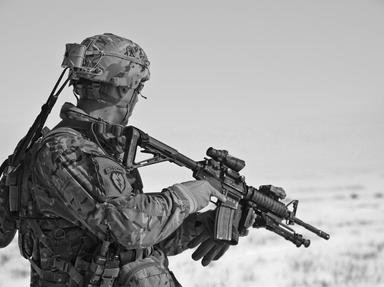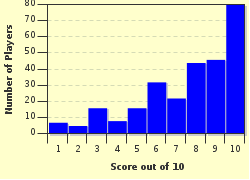Quiz Answer Key and Fun Facts
1. Perhaps the most famous creation of a particular British engineer is the bouncing bomb which was used in World War II in offensives such as Operation Chastise. However, he also came up with the idea of the Grand Slam bomb. Who is this individual?
2. The British bomb known as Grand Slam was used towards the end of the Second World War. The Grand Slam, along with the Tallboy, belonged to which classification of bomb?
3. After the Second World War had finished in 1945, many senior members of the British armed forces were still very pleased with the effect that the Grand Slam had on operations. Here is what Sir Arthur Travers Harris had to say about the bomb:
"This 22,000 lb. bomb did not reach us before the spring of 1945, when we used it with great effect against viaducts or railways leading to the ___ and also against several U-boat shelters."
What part of Germany, known for being a very important industrial area, fills the blank in his quote?
4. The Grand Slam bomb was manufactured by the company, Vickers, which was acquired by Rolls-Royce plc. in 1999. In which of the following British cities, known for its steel production, was Vickers established?
5. The basic principle behind the militaristic use of the Grand Slam bomb was to penetrate the ground as far as possible for maximum effect. Which of the following characteristics of the Grand Slam bomb had the greatest impact (excuse the pun) on how significantly the ground was penetrated?
6. The Grand Slam bomb had a fantastic set of fins on its tail and these were used to stabilise the motion of the bomb. In particular, the fins were used to provide a stabilising spin. This method of maintaining orientation is similar to which of the following?
7. What is a bomb without an explosive? Well, it isn't very useful that's for sure. Which of the following was the explosive that was used to fill the casing of the Grand Slam bomb?
8. The first use of the Grand Slam bomb was in March 1945 by a squadron leader in the British Royal Air Force, C. C. Calder. What was the intended target of the bomb?
9. The first Grand Slam bomb ever dropped was by the Avro Lancaster B.Mk 1 (Special) bomber from a height of approximately 16,000ft above sea level. By the time the bomb had made it to the ground it would be travelling at a speed of roughly 320 metres per second (m/s or m s^-1). To which of the following is that value closest?
10. Which of the following US Presidents quantified the atomic bomb, "Little Boy", that was dropped on Hiroshima in terms of the British Grand Slam bomb in this quote?
"That bomb had more power than twenty thousand tons of TNT. It had more than two thousand times the blast power of the British Grand Slam, which is the largest bomb ever yet used in the history of warfare."
Source: Author
jonnowales
This quiz was reviewed by FunTrivia editor
Bruyere before going online.
Any errors found in FunTrivia content are routinely corrected through our feedback system.

